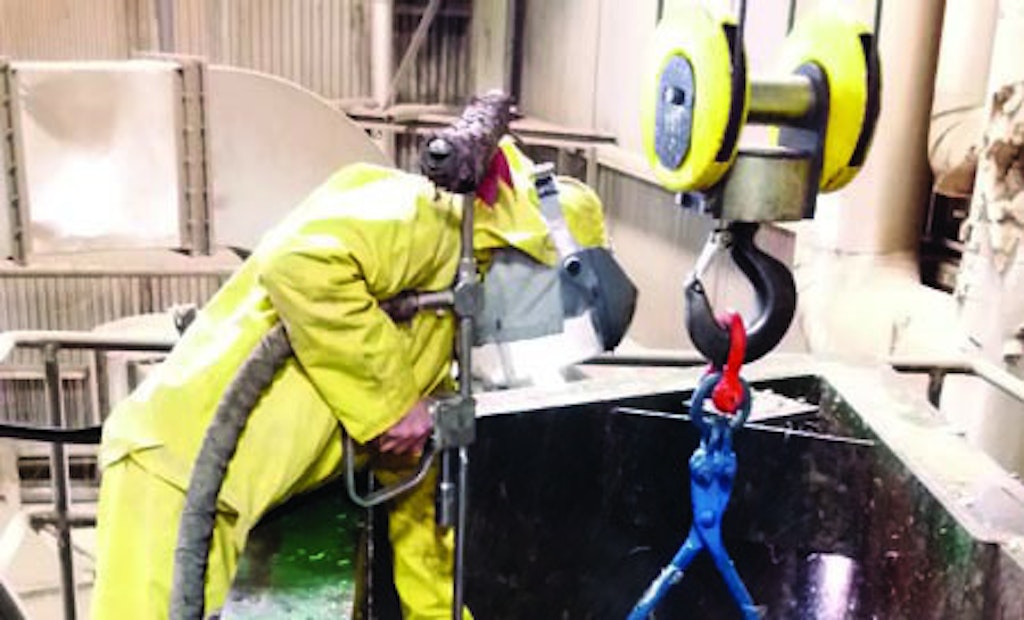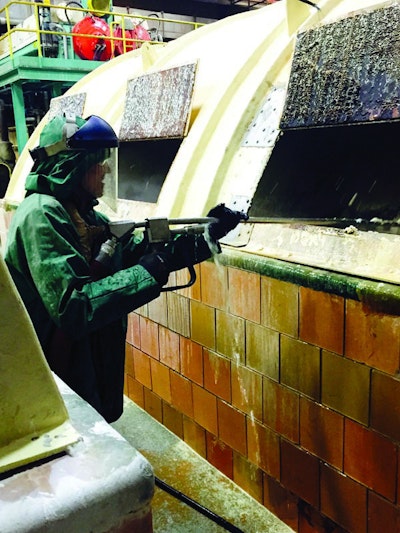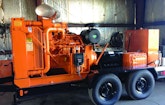
Interested in Municipal/Industrial?
Get Municipal/Industrial articles, news and videos right in your inbox! Sign up now.
Municipal/Industrial + Get AlertsThe stakes are high every time a crew from Hydroblasters Inc. steps into a papermaking plant to clean large evaporators during a planned maintenance shutdown. But they handle the pressure easily with a Series 225 Model 305 hydroblaster made by NLB Corp.
“During outages, plants are usually down for seven to 10 days,” says Rod Marquette, who co-owns the Wisconsin Rapids, Wisconsin-based company with his wife, Jennifer. “Typically we’re the first ones in there, and all the other contractors are waiting for us to finish because they can’t do their jobs until we finish cleaning. It can get pretty intense. But we get the job done, which is why some customers have been with us for more than 15 years.”
Since the company was founded in 1994, Hydroblasters has grown to 25 full-time employees (up to 45 during summers) and built up a large fleet of equipment to handle customers from around the state. The company owns nine high-pressure hydroblasters, mostly made by NLB and Jetstream of Houston (a subsidiary of Federal Signal Corp.). In addition, it runs a Vac-Con combination vacuum truck and seven industrial vacuum trucks made by Vac-Con, GapVax Inc., Super Products and Guzzler Manufacturing (a subsidiary of Federal Signal Corp.).
Hydroblasters primarily serves customers in the papermaking industry, but also caters to food-processing and power-utility clients. Crews clean everything from boilers, evaporators and stock tanks to pipelines and pulp washers. Sometimes they’re called in to use a hydroblaster to cut through thick logs that periodically jam chipping machines at paper mills. But the majority of the work centers on cleaning evaporators, and the Model 305 is the company’s unit of choice to handle these tough jobs, Marquette says.
Here’s a quick primer on evaporators, which paper mills employ to heat up and recycle a chemical solution that’s used to make paper pulp. The evaporators separate water from the solution and render both the solution (known as black liquor) and the resulting water reusable in the papermaking process; that, in turn, reduces the amount of freshwater required to make paper.
Cleaning evaporators is no easy task. A large paper mill might have as many as 15 evaporators, each one filled with roughly 800 1-inch-diameter, 50-foot-long metal tubes. Eventually, the tubes start to clog with hardened black liquor, which decreases the evaporator’s efficiency. That’s when Hydroblasters crews come in, and it’s not unusual for them to encounter evaporators with 50 to 80 percent of the tubes clogged, Marquette notes.
“They’re probably the hardest thing we clean,” he explains. “In fact, we often pick up new customers because it’s hard to find contractors that can get the evaporators clean. I’d say they’re about an eight on a [difficulty] scale of one to 10 – and I’ve seen some 10s along the way, too.
“But we’ve done it for so long that it’s not that difficult for us,” he continues. “Some of our customers are amazed at how fast we can clean evaporators. We’ve cleaned some units in six hours that it took a previous contractor days to do.”
How does the Model 305 work so well? Key factors are its 300 hp Cummins diesel engine and slow-running, stainless steel plunger pump, which can generate anywhere from 10 to 50 gpm at a range of 8,000 to 40,000 psi. Specially designed stainless steel nozzles with carbide tips, made by Advanced Pressure Systems, also play a critical role in knifing through the black liquor scale, which Marquette says is almost as hard as concrete.
“We can clean a tube in two to seven minutes,” he notes. “We bought the Model 305 just to clean evaporators … it provides the perfect amount of pressure and volume. We usually keep it at 10,000 to 20,000 psi, which is the sweet spot for this kind of work. Any more pressure and we lose the efficiency of volume to push the material out of the tubes, and any less pressure, we can’t cut through the liquor scale.”
Marquette compliments the Model 305 for its durability, which is critical during plant shutdowns. In a typical evaporator cleaning project, the unit might run 24 hours a day for three or four days without stopping, operated by rotating crews. “It doesn’t stop running until we’re finished,” he says. “We can’t afford to have breakdowns. We’d probably lose a customer if we did have one.”
Ease of maintenance and user-friendly features also make the Model 305 a crew favorite, Marquette says.
“Essentially, the Model 305 is the core of our company — the most essential piece of equipment we own,” he points out. “It’s a real workhorse that allows us to handle the challenge of plant [maintenance] outages.
“Life gets kind of boring for us when we’re not in the middle of an outage,” he quips. “Anyone can go in and do the day-to-day stuff. But we thrive on jobs where the pressure is on.”







